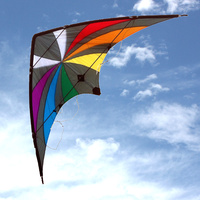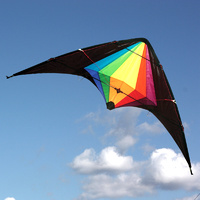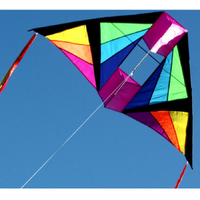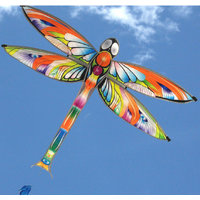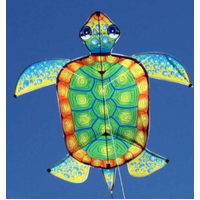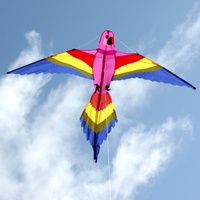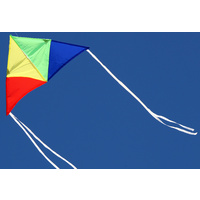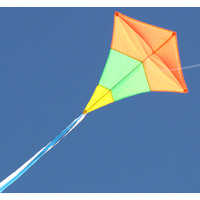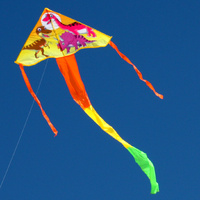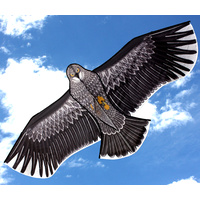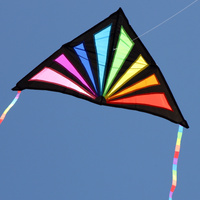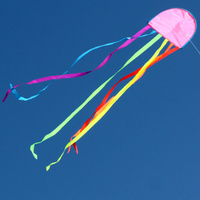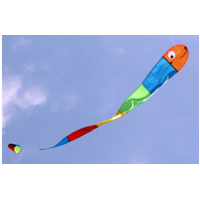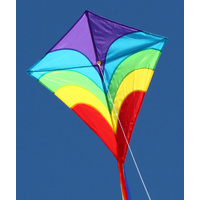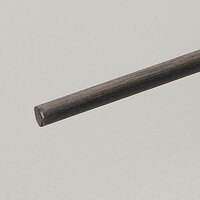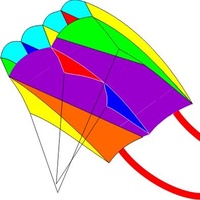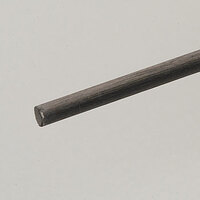Kites
Kite Flying for beginers
Like many early inventions, history is a little muddled on who actually invented the kite. Most historians credit Ancient Chinese philosopher Mo-tse, though evidence suggests kites were being flown in other parts of the world around the same time frame in New Zealand, Indonesia, Hawaii, and Malaysia. The difference is those were oral tales of kite flying, while Mo-tse’s kite flying was recorded in written history. Regardless of its origin, kite flying is super fun and a great activity to do with the kiddos. for a family-friendly outing everyone can get excited about. Like Mary Poppins sang, “Let’s go fly a kite and send it soaring.”

Best kites for kids
Before you can go fly one, you need a kite. There are plenty of options out there, but when you’re purchasing a kite for kids, think simple: A single-line kite is best. You’ll want a small kite if you plan on giving the kids a try (which you most likely are) because large kites can drag an adult if the wind is strong enough. A diamond– or delta-shaped kite is a top pick for children because these kites are quick to assemble and come in a wide variety of colors, patterns, and even characters. Another ideal choice for a kid’s kite is an easy-flyer kite. This is also a delta kite that includes a tail.
Where to fly a kite
Once you have your kite, you need to find an ideal spot to take the kids to fly it. Kites must be flown in open spaces that are not near any trees or power lines. (Think Charlie Brown and all the times his kites got stuck in a tree.) The beach, an open field, or meadow in a park are the perfect spots for kite flying. Remember to take into account the people around you. Find a spot where you aren’t going to get in anyone’s way because what goes up eventually does come down.

When to fly a kite
Clearly, wind is a necessary component to successfully getting your kite off the ground and into the air. That is what makes the beach a prime spot for kite flying, since winds are typically blowing in off the water. Experts recommend not flying your kite when the wind speed exceeds 20 miles per hour (mph) because the kite can be damaged. The perfect wind speed to fly a kite is between 8 and 20 mph. Use the Beaufort Wind Scale to gauge the day’s wind speed before trying to launch a kite:
- Light: 4 to 7 mph
- Gentle: 8 to 12 mph
- Moderate: 13 to 18 mph
- Fresh: 19 to 24 mph
- Strong: 25 to 31 mph
Legend has it Benjamin Franklin did it, but don’t ever fly a kite in a rain or lightning storm. Wet kites and flying lines really do attract electricity in clouds.
How to get your kite into the air
You’ve bought the perfect starter kite for kids, found an ideal spot, and the wind is just right. Now what? It’s time to fly the kite. Here’s how:
- Turn and stand so your back is against the wind.
- Hold the kite at the bridle point. The bridle point is where the kite’s lines and the flying line meet.
- Allow the wind to pick up the kite. If the wind speed is sufficient, it will catch the kite.
- As the kite glides up, pull it back to you slightly with the flying line.
- Keep allowing the kite to glide up while pulling it back gently until it reaches the desired height.
- If you need a helping hand, have someone stand downwind with the kite. As the person releases the kite, the flyer keeps slowly pulling the line toward him or her as the kite climbs.
Troubleshooting
Even on the perfect kite-flying day, novice kite flyers encounter difficulty achieving flight. It happens. To avoid problems from the beginning, make sure you’re using the correct flying line. A line that is too heavy will keep a kite from taking flight, while one that’s too light may snap. Never use a fishing line in place of a conventional kite line. Fishing line is too difficult to see and can be dangerous to spectators. It can also cut hands.
Common kite problems
- Spinning kite: Check to see the tail isn’t too short and make sure the struts on both sides of the kite are equal.
- Pulls to one side: Adjust the tow point or where the flying line attaches to the bridle point.
- Kite won’t launch: Check to see if the tail is too heavy or short, and look to see if the tow point isn’t too far forward.
If your kite gets tangled in power lines
Drop the string immediately. Kite strings can conduct electricity if they are wet or slightly damp. It’s always best to call the local power company instead of trying to get the kite down yourself.
Flying kites with kids is a fabulous activity to enjoy with the family. There’s something about watching a kite glide in the sky that makes you smile. Don’t worry; you won’t end up like Charlie Brown. Just make sure there aren’t any kite-eating trees around!

